Evan Surname Ancestry ResultsOur indexes 1845-1865 include entries for the spelling 'evan'. In the period you have requested, we have the following 21 records (displaying 1 to 10): Single Surname Subscription | | | Buying all 21 results of this search individually would cost £138.00. But you can have free access to all 21 records for a year, to view, to save and print, for £100. Save £38.00. More... |
These sample scans are from the original record. You will get scans of the full pages or articles where the surname you searched for has been found. Your web browser may prevent the sample windows from opening; in this case please change your browser settings to allow pop-up windows from this site. Inhabitants of Derbyshire
(1846)
Samuel Bagshaw's Derbyshire directory lists traders, farmers and private residents in the county by town, parish and/or township.EVAN. Cost: £6.00.  | Sample scan, click to enlarge

| London Missionary Contributions
(1850)
The monthly Missionary Magazine and Chronicle listed contributions to the London Missionary Society received from individuals and through the auxiliaries. The issues for 1850 covered contributions received from 1 November 1849 to 31 October 1850.EVAN. Cost: £6.00.  | Sample scan, click to enlarge
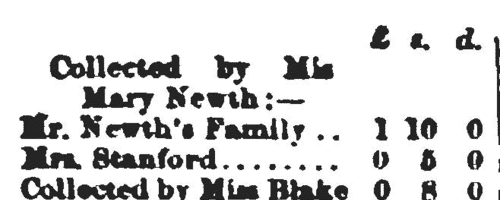
|  Inhabitants of Newington in Surrey
(1851) Inhabitants of Newington in Surrey
(1851)
The 1851 census return for St Mary Newington, Surrey, registration district: St Peter Walworth sub-district: enumeration district 8: described as: "All that Part of the Parish of St. Mary Newington, which Comprises Walworth Common (south side) from Walworth Road to Providence St., Including West side of Providence St., Appleton Place, Charles St., Pilgrim St. (both sides), Port St. (both sides), Milk St. (both sides) and Red Lion Row". This area lay in the ecclesiastical district of St Peter Walworth, and in the borough of Lambeth. HO 107/1567. The addresses listed in the actual returns are 1 to 7 Red Lion Row, Grosvenor Park; 1 to 7 Port Place, Walworth Common; 1 to 27 Milk Street; 1 to 6 Port Place; 2 to 24 Port Street; Port House, Port Street; 1 to 32 Pilgrim Streeet; 1 to 3 Bucknell Place; 1 to 7 Charles Street; 1 to 4 Nuns Place; 1 to 5 Appleton Place; 1 to 6 Boytons Place; 1 to 6 Portland Terrace; and 9 to 18 Providence Street. EVAN. Cost: £4.00.  | Sample scan, click to enlarge

|  Inhabitants of Southwark in Surrey
(1851) Inhabitants of Southwark in Surrey
(1851)
The 1851 census return for St George the Martyr, Southwark, registration district: London Road sub-district: enumeration district 3: described as: "Market St commencing at 'Dog & Stile) (both sides) to Coss (Zinc Worker, opposite Clark's Timber Yard - Providence Place - George St & Passage - Saint George's Row - Parliament Street - St George's Market including Butcher Row - London Road No 92 (Catholic Nunnery) to the 'Duke of Clarence' both inclusive - & Borough Road to Apps inclusive, corner of Mansfield St." This area lay in the parish of St George the Martyr, Southwark. The addresses listed in the actual returns are 17 to 42 and 46 to 50 Market Street, 45, 172 and a half and 173 Southwark Bridge Road, 1 and 2 Market Street, 1 to 4 Providence Place, 8 to 23 Butcher Row, 1 to 12 George Street, 1 Falconer's Court, 1 to 5 George(s) Passage, 3 to 17 (St) Georges Row, 2 to 4, 6, 7, 13 and 16 Parliament Street, 1 to 7 and 26 St George's Market, 92 to 132 London Road (including the Catholic convent), and 1 to 8 Borough Road.EVAN. Cost: £4.00.  | Sample scan, click to enlarge

| Dissolutions of Partnerships
(1854)
Trade partnerships dissolved, or the removal of one partner from a partnership of several traders: in England and Wales
EVAN. Cost: £6.00.  | Sample scan, click to enlarge

| Missionary donations from Cardiganshire
(1855)
The Congregational and a number of other independent churches together formed the Evangelical Alliance, committed to promoting and supporting missions to the heathen. The areas chosen for their projects were Guiana, South Africa, India, the South Seas and China. The work of the missionaries was not only in preaching the Gospel, but also in translating the Bible into local languages, and establishing churches, schools and orphanages. Orphans and native teachers were often given the names of principal contributors or congregations back in Britain. In Britain the large amounts of money needed for this work were raised among the Congregational and independent congregations, arranged by auxiliaries for each county (although some contributions for each county might in fact come in from congregations and individuals in neighbouring areas); money was gathered by ministers, at special services, by supporters, and in missionary boxes. The accounts of all these contributions were published as part of a monthly magazine called the Evangelical Magazine. Each issue of the magazine carried obituaries of prominent members of the congregations; general articles on religion; reviews of newly-published religious books; home news, mainly about meetings of importance or interest by the alliance or in individual churches; and then a separate section called the Missionary Chronicle. The Missionary Chronicle was devoted to letters and reports from the missionaries; and concludes with a set of accounts of donations towards the missionary work. This is the index to the donations reported in the magazine, January to December 1855, from Cardiganshire.EVAN. Cost: £6.00.  | Sample scan, click to enlarge
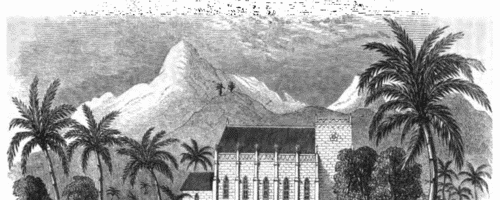
| Missionary donations from Guernsey
(1855)
The Congregational and a number of other independent churches together formed the Evangelical Alliance, committed to promoting and supporting missions to the heathen. The areas chosen for their projects were Guiana, South Africa, India, the South Seas and China. The work of the missionaries was not only in preaching the Gospel, but also in translating the Bible into local languages, and establishing churches, schools and orphanages. Orphans and native teachers were often given the names of principal contributors or congregations back in Britain. In Britain the large amounts of money needed for this work were raised among the Congregational and independent congregations, arranged by auxiliaries for each county (although some contributions for each county might in fact come in from congregations and individuals in neighbouring areas); money was gathered by ministers, at special services, by supporters, and in missionary boxes. The accounts of all these contributions were published as part of a monthly magazine called the Evangelical Magazine. Each issue of the magazine carried obituaries of prominent members of the congregations; general articles on religion; reviews of newly-published religious books; home news, mainly about meetings of importance or interest by the alliance or in individual churches; and then a separate section called the Missionary Chronicle. The Missionary Chronicle was devoted to letters and reports from the missionaries; and concludes with a set of accounts of donations towards the missionary work. This is the index to the donations reported in the magazine, January to December 1855, from Guernsey.EVAN. Cost: £6.00.  | Sample scan, click to enlarge
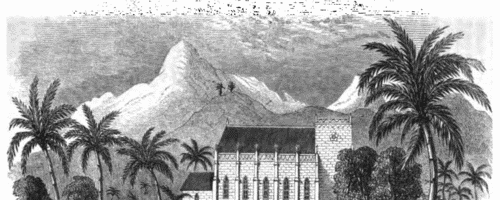
| Missionary donations from London
(1855)
The Congregational and a number of other independent churches together formed the Evangelical Alliance, committed to promoting and supporting missions to the heathen. The areas chosen for their projects were Guiana, South Africa, India, the South Seas and China. The work of the missionaries was not only in preaching the Gospel, but also in translating the Bible into local languages, and establishing churches, schools and orphanages. Orphans and native teachers were often given the names of principal contributors or congregations back in Britain. In Britain the large amounts of money needed for this work were raised among the Congregational and independent congregations, arranged by auxiliaries for each county (although some contributions for each county might in fact come in from congregations and individuals in neighbouring areas); money was gathered by ministers, at special services, by supporters, and in missionary boxes. The accounts of all these contributions were published as part of a monthly magazine called the Evangelical Magazine. Each issue of the magazine carried obituaries of prominent members of the congregations; general articles on religion; reviews of newly-published religious books; home news, mainly about meetings of importance or interest by the alliance or in individual churches; and then a separate section called the Missionary Chronicle. The Missionary Chronicle was devoted to letters and reports from the missionaries; and concludes with a set of accounts of donations towards the missionary work. This is the index to the donations reported in the magazine, January to December 1855, from London.EVAN. Cost: £6.00.  | Sample scan, click to enlarge
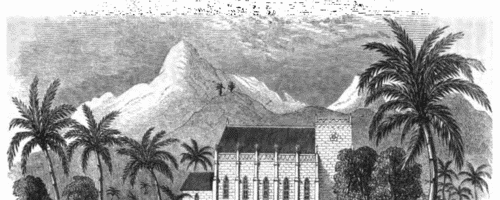
| New South Wales Intestates
(1855)
The probate courts of the Australian colonies furnished returns of estates of deceased intestates, giving full name, colonial residence, supposed British or foreign residence of family (often unknown, or left blank), amount of the estate and how much had been disbursed and how. The date of death is often stated, and if by accident, suicide or crime. Names were carried forward from return to return until the estate was expended or exhausted. EVAN. Cost: £6.00.  | Sample scan, click to enlarge

| Hare Coursing Competitors at Belsay (1856)
Names of competitors from results recorded in the Coursing Calendar for September to December 1856; in which the meetings are listed chronologically, giving precise dates and the names of the presiding officers (stewards, judge, slipper, field officer, secretary). In each heat two greyhounds are raced, the winner from each pair proceeding to the next heat. Each dog is identified by its name and that of its owner. The parents of the winning dog are usually stated. The name of each competition is given with the number of nominations, the stakes and prizes. There are also occasional matches between particular dogs. These abbreviations are used: b. bitch; bd. brindled; be. blue; bk. black; br. l. broken leg; cr. cream; d. dog; dn. dun; dr. (with)drawn; dr. l. drawn lame; f. fawn; gr. grey; p. puppy; r. red; t. ticked; tn. tanned; w. white.
EVAN. Cost: £8.00.  | Sample scan, click to enlarge
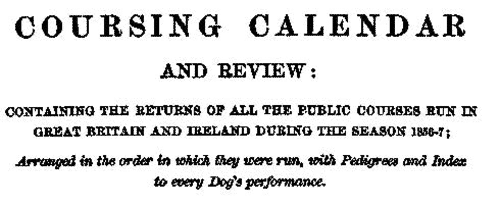
|
Research your ancestry, family history, genealogy and one-name study by direct access to original records and archives indexed by surname.
|













